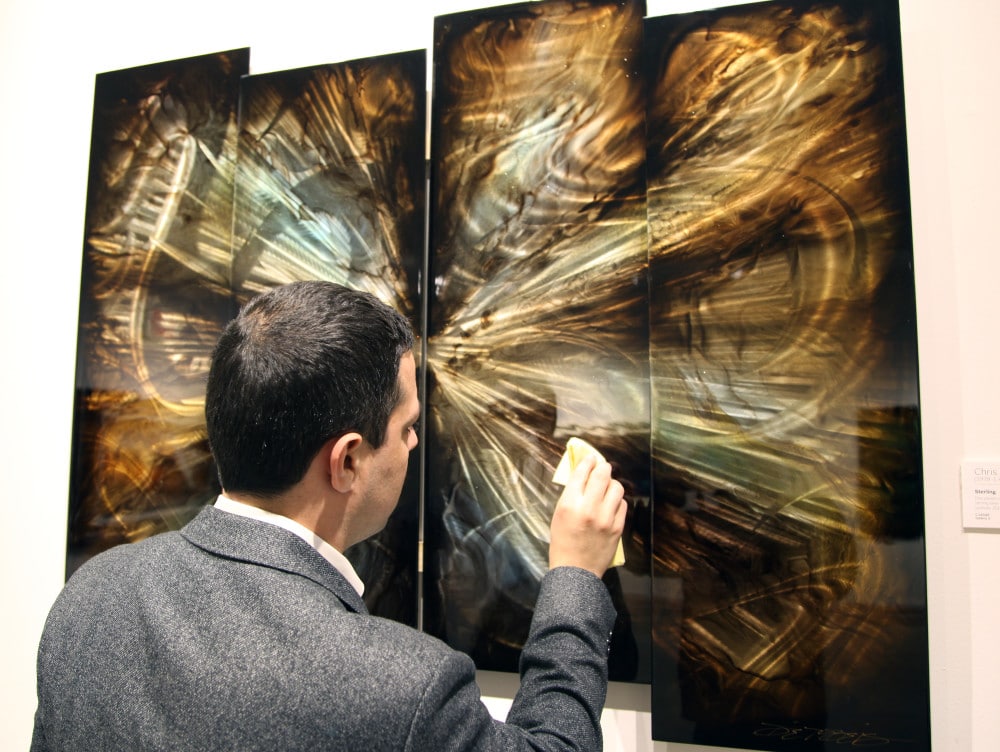How to Clean Metal Art
Unlike maintaining canvas or paper, artwork on metal by artists like Chris DeRubeis and Patrick Guyton requires a different type of care.
Ever since he saw the patterns created by grinding a metallic gas tank for a motorcycle, DeRubeis has preferred to work with metal as opposed to traditional canvas or paper when it comes to painting.
DeRubeis’ unique metal art is produced on hand ground aluminum, and hand painted using a combination of urethane, acrylic and a chemical cocktail that only DeRubeis knows. It is then covered with a high-gloss urethane clear coating.
Even with this protection, metal art can succumb to long-term damage if not taken care of properly. Fingerprints can be common on metal art, whether it’s from moving it, curious children or guests accidentally bumping into it. Fingerprints or smudges, which at best are unsightly, can actually corrode the art due to the oils from the fingerprints or smudges, even if they are faint or small.
To keep the luster of your metal art shining for years to come, DeRubeis provides some tips for taking care of metal art.
Generally, metal art only needs the occasional dusting to keep cobwebs or dust from gathering. Use a dry, soft cloth to lightly rub off dust. It is emphasized that the cloth should be soft and clean, as a dirty or grimy rag will only cause damage.
To remove fingerprints, first remove any dust from the work to reduce the chance of scratching the metal art with loose grains. From there, use a diluted spray detailer, which can be obtained at an auto parts store, to gently wipe off the fingerprints.
Using the diluted spray detailer is safe because the surface coating DeRubeis uses is the same clear coat as used on an automobile finish. However, do not use metal cleaner or polish to clean the art, as this may remove the protective clear coat.
Hanging metal art
Hanging metal art is not too different from hanging other mediums, which can be found in our hanging art infographic. The key factor to know is how much the artwork weighs, as this will determine what type of hanger to use. If artwork weighs more than 20 pounds, it should be displayed using reinforced hanging methods.
To weigh your metal art, use a simple body weight scale (like those in bathrooms) to determine the exact weight. With this knowledge, buy wall fasteners that match the weight range of your artwork. For drywall, make sure to hang the art on a stud. Special hangers based on the weight you need are recommended for brick or masonry walls.
With heavier works, consider using more than one hanging point. If using a wire to hang the art, the farther apart the desired hanging points are, the more stable it will hang.








